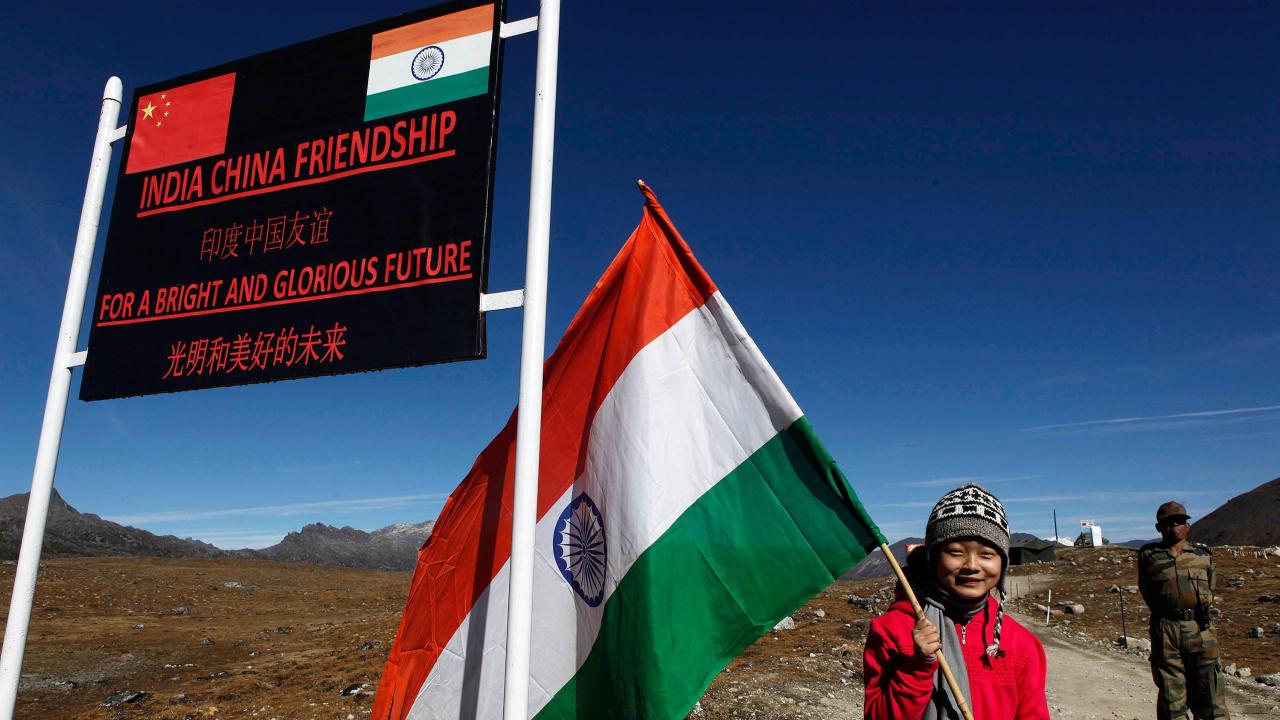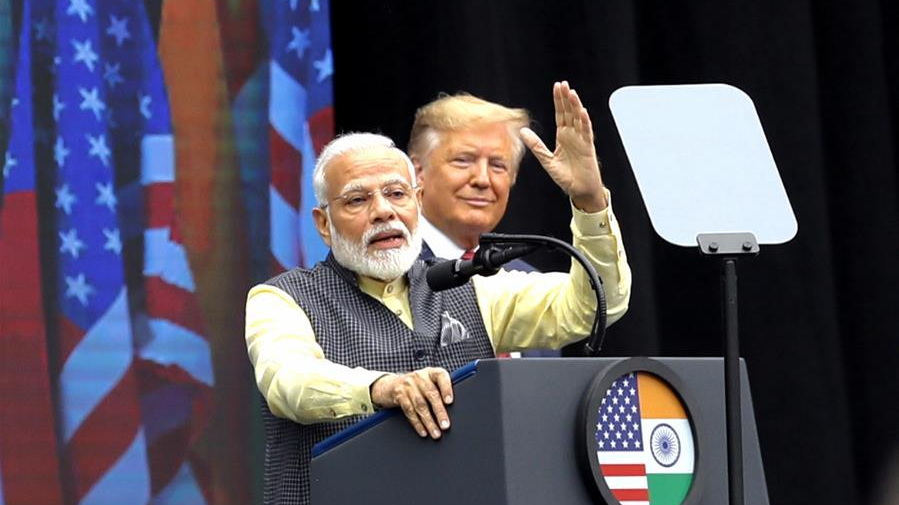
Editor's note: Andrew Korybko is a Moscow-based American political analyst. The article reflects the author's opinions and not necessarily those of CGTN.
The Chinese Ministry of National Defense announced on Wednesday that "The Chinese and Indian frontline troops at the southern and northern bank of the Pangong Tso Lake start synchronized and organized disengagement from February 10." This follows the outcome of their ninth round of China-India Corps Commander Level Meeting.
Provided that the agreement is implemented in full, then Asia will breathe a collective sigh of relief as the two largest countries in the world finally de-escalate tensions that first surged last year following several violent incidents along the Line of Actual Control (LAC).
China blamed India for the first deadly clashes between their forces in decades, while India blamed China. What's important at this point, however, is to focus on what comes next and how such regrettable incidents can be avoided in the future. The agreement to synchronize the disengagement of their forces shows that neither side wants matters to escalate any further than they previously did.
It also speaks to the success of the difficult but ultimately successful meetings between their military representatives since then. In the end, diplomacy won out over more forceful means for resolving their differences.
That's exactly how it should be since any large-scale armed conflict between these neighboring nations and historically connected civilizations was bound to end in a mutually detrimental outcome. After all, the 21st century is supposed to be the Asian Century according to many analysts, but that can't unfold to its maximum potential if China and India remain at loggerheads over the LAC.
To be clear, their territorial differences aren't conclusively resolved, but with diplomacy nowadays leading the way, there's renewed optimism that such differences will remain manageable without either side resorting to military means again.
The international context in which their synchronized disengagement is taking place is worth mentioning. Newly inaugurated U.S. President Joe Biden is presently reviewing his country's role in the world after the chaotic past four years of the former Donald Trump Administration.
It was the 45th U.S. president who aimed to divide and rule Asia by provoking hostilities between China and India, but with him finally out of the White House after only a single term in office, it's interesting that they were able to patch up their differences so quickly. This likely isn't a coincidence either since the Biden Administration is comparatively more pragmatic than the Trump one.

Indian Prime Minister Narendra Modi addresses the "Howdy, Modi!" rally along with then U.S. President Donald Trump, in Houston, Texas, the U.S., September 22, 2019. /Xinhua
Indian Prime Minister Narendra Modi addresses the "Howdy, Modi!" rally along with then U.S. President Donald Trump, in Houston, Texas, the U.S., September 22, 2019. /Xinhua
Although President Biden recently spoke about what he expects will be a prolonged period of "extreme competition" with China, he at least hasn't yet done anything comparatively "out of the ordinary" by former President Trump's standards.
Although his country's hostile rhetoric has continued, as does its misleadingly described "freedom of navigation operations" in the South China Sea, the Biden Administration doesn't seem as interested in exacerbating differences between China and India as the Trump one was. It's likely partially due to this lesser degree of meddling that they were able to reach their recent deal.
From the Indian perspective, New Delhi cannot rely as much on Washington as before for support during its tense disagreements with Beijing. This is because President Biden promised to focus on what he described as the "international rules of the road," which hints at a willingness to abide more by international norms than before.
The key qualifier here is "more," not entirely, since it's taken for granted that the U.S. will still unilaterally abrogate those same "rules of the road" as it feels necessary to advance its interests. Even so, it hasn't sought to do this with respect to Chinese-Indian relations, at least not yet.
New Delhi likely interpreted that as a signal to stabilize relations with Beijing so that both countries can constructively focus on areas of mutual interest such as managing their other differences like those in the economic sphere. So long as military tensions remain low as both sides hope they will pend the full implementation of their synchronized disengagement deal, then the likelihood of reaching agreements on other issues improves.
With this hope in mind, everyone should welcome their latest military agreement since it gives hope for getting relations back on track and refocusing on the Asian Century that both want to achieve.
(If you want to contribute and have specific expertise, please contact us at opinions@cgtn.com.)

